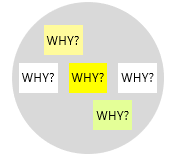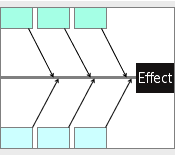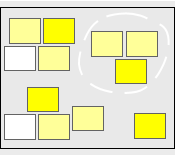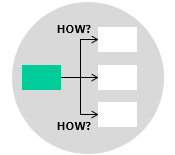
Also known as How-How Analysis and Value Driver Analysis.
Once a business problem is identified, it is important to find a solution that will permanently solve the problem. Oftentimes, you have to get to the root cause of the problem to understand why it’s happening, and this is where Six Sigma methodologies can be beneficial. Other times, you don’t even need to dig into the problem. You just need to solve it right away, and this is what is called low-hanging fruit.
These low-hanging fruit may be quick wins that require minimal resources or larger projects that may involve capital expenditure. For example, after reviewing a process, you may have identified non-value-added activities that need to be eliminated. Other examples include improving workflows and processes, changing workplace layout, enhancing customer service, mistake proofing processes, and improving management reports.
Whether tackling low-hanging fruit or fruit that is on the top of the tree (more complex challenges), it is important to come up with actionable items in order to solve the problem permanently. One effective approach for generating such actionable ideas is through the utilization of the how-how analysis.
The how-how diagram is a simple and straightforward method that is used to generate multiple ideas to solve a specific problem. It provides an effective structure for organizing possible ideas and solution options all in one place. It works by repeatedly asking “How can this be solved?” until you can no longer break the answers any further. Multiple answers can be given for a single question, and therefore, the result can be represented in a hierarchical tree format.

Drawing the Diagram
How-how diagrams are commonly developed during collaborative brainstorming sessions. The following steps outline a typical approach to drawing the diagram.
- With your team, clearly state the problem then write it on a post-it card. Place the problem card on the left side of a whiteboard or wall.
- Ask ‘how can this problem be solved?’. Let the team members write as many answers as possible on post-it cards, each idea separately, then stick them up to the right of your problem.
- Repeat this sequence of breaking down the problem once more. Keep asking ‘How’ until the ideas are specific enough and you are satisfied with them.
- Once you are finished, prioritize and determine the key ideas to be implemented.
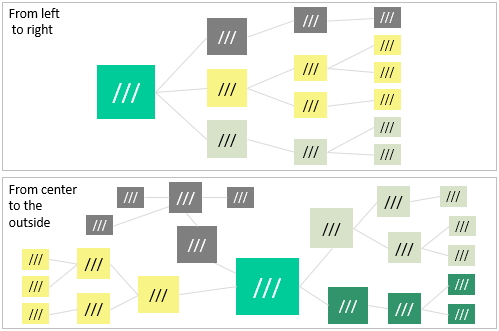
Example – Energy Reduction
For example, let’s consider the goal of reducing energy consumption in a production plant. The following how-how diagram illustrates the ideas generated by a team for achieving this goal.
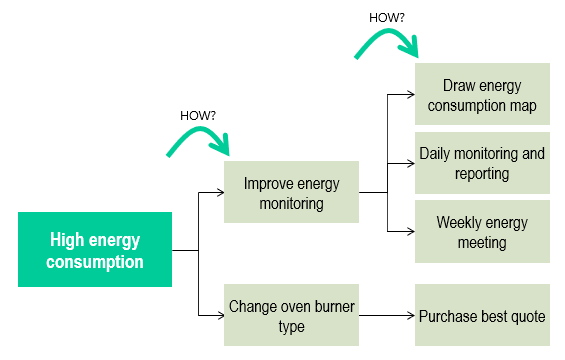
Example – Spoilage Reduction
The following is another example which involves a team seeking ways to minimize spoilage in a manufacturing business.


Note in the previous example that you might use the ‘OR‘ symbol to indicate alternative ideas. You can also add thick borders around the ideas that has been chosen to be part of the final solution.
Wrapping Up
The how-how approach is a straightforward and systematic method for generating multiple ideas to address a specific problem. It facilitates the generation of these ideas in a structured manner by repeatedly asking “How can this be solved?” until a comprehensive solution framework is established. This approach organizes these ideas in a structured way, making it a valuable tool for solving problems.
Other Formats
Do you want to use the slides in your training courses?

How-How Diagram Training Material – $14.85
Related Articles
Related Templates





